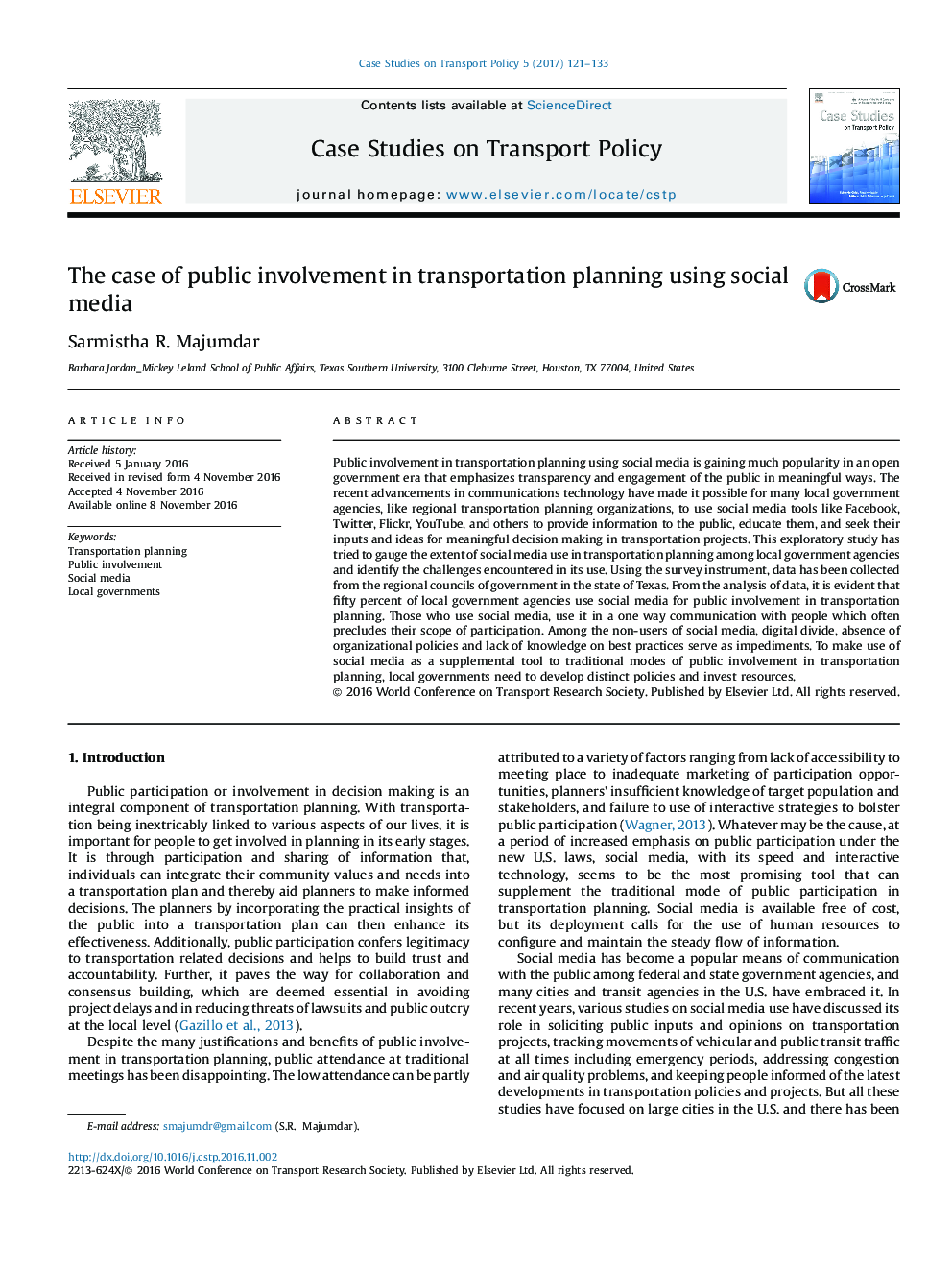| Article ID | Journal | Published Year | Pages | File Type |
|---|---|---|---|---|
| 6479330 | Case Studies on Transport Policy | 2017 | 13 Pages |
•Social media use by local governments in transportation planning is sporadic.•Local governments tend to use social media in one-way communication with people.•Comments and suggestions posted on social media sites do not carry much weight.•Local governments lack knowledge on best practices in social media use.•Management’s perception towards social media use needs to change along with policies.
Public involvement in transportation planning using social media is gaining much popularity in an open government era that emphasizes transparency and engagement of the public in meaningful ways. The recent advancements in communications technology have made it possible for many local government agencies, like regional transportation planning organizations, to use social media tools like Facebook, Twitter, Flickr, YouTube, and others to provide information to the public, educate them, and seek their inputs and ideas for meaningful decision making in transportation projects. This exploratory study has tried to gauge the extent of social media use in transportation planning among local government agencies and identify the challenges encountered in its use. Using the survey instrument, data has been collected from the regional councils of government in the state of Texas. From the analysis of data, it is evident that fifty percent of local government agencies use social media for public involvement in transportation planning. Those who use social media, use it in a one way communication with people which often precludes their scope of participation. Among the non-users of social media, digital divide, absence of organizational policies and lack of knowledge on best practices serve as impediments. To make use of social media as a supplemental tool to traditional modes of public involvement in transportation planning, local governments need to develop distinct policies and invest resources.
